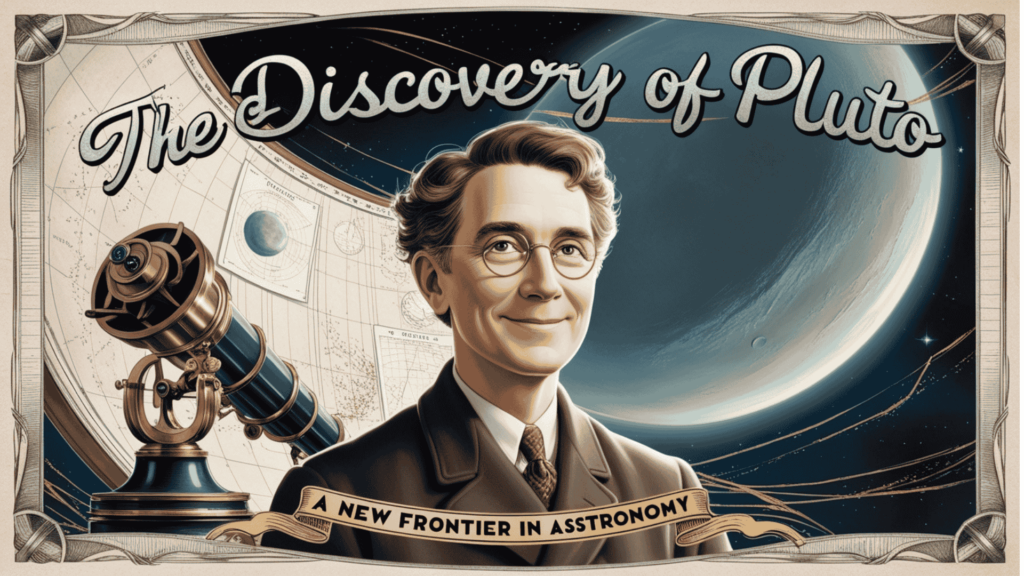Hi there, all you space lovers! Do you ever think about Pluto and the reasons it is now not considered a planet? For most of us who were raised with the idea of nine planets, it is. The announcement that Pluto no longer belongs to the category of planners but is classified as a ‘dwarf planet’ made many of us very nostalgic and was a cause of great discussion.
Let us, however, now embark on the journey about ‘Pluto’- the story of its beginning in 1930 all the way to the recent decision to reclassify it. In this blog, we try to look into reasons as to why people still love this planet and even its pop culture courtesy of retro T-shirts declaring it still a planet.
Let’s dive in!
Pluto Never Forget (1930-2006) | Retro Astronomy T-Shirt
The Discovery of Pluto A New Frontier in Astronomy

The planet Pluto was first discovered by Clyde Tombaugh, an American astronomer who lived between February 18, 1930. It was discovered at Flagstaff, Arizona’s Lowell Observatory. Astronomers were at that time busy looking for another planet, a ninth one, that they speculated two giants, Uranus and Neptune had their orbits interrupted by a massive object.
Such a planet was also known as “Planet X” and remained hidden until the extensive work of observation and deduction warranted Tombaugh’s discovery of the minute speck that is Pluto. This planet was far off, located at a distance of 4.67 billion miles from the sun, and it was thought to be the last planet that belonged to the solar system for over seven and seventy years straight.
Pluto, named after the god of the underworld in Roman mythology, quickly became a topic of interest for experts and non-experts. It was considered a mysteriously situated icy planet far from the reach of the solar system. Although not much was known about it for a large part of the 20th century, the very thought of it somewhere out there in dark space made it rare.
Pluto’s Planetary Status The Rise and Fall
Throughout the better part of the 20th century, and without fail, every school textbook, solar system model, or even the general public placed Pluto comfortably as the ninth planet. It was unlike the other planets due to its size and its peculiar orbit that crossed over that of Neptune, but rather than disappointment, Pluto was welcomed for its oddities.
However, with the passage of time, science and technology improved, and more was known about the outer solar system. Astronomers found out that there was more to examine about the outskirts of our solar system.
They found millions of other smaller rock-like objects in the Kuiper belt, the space where Pluto is found. Some of the ones they found, such as Eris, turned out to be about the same size as or bigger than Pluto, problematizing the idea of Pluto as a planet.
In fact, the biggest shift was in 2006, when the International Astronomical Union revised the definition of a planet. A celestial body should satisfy three basic conditions to be considered a planet.
- It should be able to revolve around the Sun.
- It should be round or nearly round and have sufficient mass to achieve hydrostatic equilibrium.
- It must have substantively ‘cleared’ its orbital area of other bodies, i.e., resided there, gravitationally dominated, and expelled other debris in its way.
While fulfilling the first two conditions, Pluto fails to fulfill the third one since it coexists within the Kuiper belt with other objects. This is to say that in 2006, Pluto was demoted to a ‘dwarf planet,’ a change that caused voices of anger and conflict among many. Quite a number of people who were melancholy over the status wiz-a-wiz of Pluto had much affection for the little planet encircled at the end of the solar system.
The expression “Never Forget” encapsulated the sentiment of those who fought to keep Pluto foremost in the public consciousness as the ninth planet.
Why Pluto Still Matters The Legacy of a Dwarf Planet
Even if Pluto has been demoted to a dwarf planet, it has not disappointed space enthusiasts. The mere declination of the status of Pluto has resulted in stormy feelings from many quarters, as there are people who believe that he is too unique to lose his status as a planet. But is there really any point in still talking about Pluto after its official designation has changed to that of a dwarf planet?
To begin, Pluto’s history with discovery and exploration demonstrates humankind’s innate curiosity and innate drive to decipher every single mystery of the universe. The New Horizons mission, which blasted in 2006 and passed Pluto on July 14, 2015, was the most informative feat on Pluto captured in images and data.
It helps that now we can view Pluto as a more intricate being than earlier thought, complete with water-ice mountains, possible oceans underneath its surface, and even evidence of geological activity its surface experienced in the past. These developments have only strengthened the intrigue around Pluto and its significance within the solar system.
Pluto’s narrative is also inspirational in that it encapsulates the changing nature of science. The decision to reclassify Pluto is indicative of the ongoing advancement of astronomy and related planetary sciences. The more complex the system is, the more language and concepts need to be modified to comprehend it. By this marker, I think it is safe to say that there is a limit to the understanding of Perkins.
The Pop Culture Impact Why “Never Forget Pluto” Lives On
The phrase “Never Forget Pluto” has been embraced for more than one reason and has become a point of nostalgia, perseverance, and defiance. Many characters and objects associated with Pluto have stayed part of Western society’s culture.
In particular, towards the end of the 1910s, there were and still are retro ambitions such as shirts imprinted with the words’ Pluto: Never Forget’, which bosom accompanied the status of Pluto the planet and appropriately defended this space underdog.
Custom tee shirts with old-fashioned designs bring pictures of Pluto as an all-around planet, with the age brackets of 1930-2006 in some cases, which portrays the time interval that Pluto was truly treated as a planet. The vintage design not only goes far back as to entice people’s imagination with the bygone days but also reminds individuals of the time in their lives when they were learning about Pluto as the planet associated with the solar system.
What is so special about these T-shirts? They strike a chord among people of all ages who love astronomy, as well as those who find humor and nostalgia in the story of Pluto. They also act as ice-breakers bearing a meaning deeper than what’s on the surface: T-shirts encourage people to speak about their feelings relating to Pluto and the solar system.
Be it worn by an adult who remembers Pluto as a planet or by children who only know it as a dwarf planet; such tees contribute towards carrying on the legacy of Pluto.
Pluto and the Future of Space Exploration

Pluto has become the focus of efforts even if there are no more planets left to classify. The Kuiper Belt is also home to many dwarf planets, ice bodies, and debris left from the formation of the solar system. Thus, investigation of Pluto and its surrounding regions assists in understanding how the solar system evolved and how certain planets, especially Earth, came into being.
After completing the New Horizons project that gave detailed pictures of Pluto, this agency has continued to the Kuiper belt, where the mission is still seeking new parts of the solar system. There have been a lot of extensive breakthroughs concerning the planet Pluto that this mission has achieved, such as its atmosphere, surface, and even satellites. Even more information concerning the history of Pluto and the solar system it occupies will probably be accessible in the future.
On the other hand, the downgrading of Pluto has sparked interest in planetary science as well as astronomy in general. As a result, many who love the saga of Pluto have started looking for the Kuiper Belt, the reasons the planets are classified, and even the rest of the galaxy. To a certain extent, the demotion of Pluto restored public interest in science in all its forms, making audiences of all ages seek the sky with all the beauty and even longing more than before.
Conclusion
To summarize, the story of Pluto is far from over, regardless of its new status as a dwarf planet. From the time it was established over the years from the year 1930 to the year, it was degraded over decades by the year 2006, who would not be interested in Pluto? It tells a great story of change, evolution, and the further development of people’s interest in the cosmos. Be it through retro outfits, or renewed exploration of outer space, there will always be Pluto.
Therefore, what is your opinion about Pluto?
FAQ
- Who was the first individual to identify the existence of a planet named Pluto, and when did this take place?
The planet PLUTO, which was later reclassified as a Dwarf Planet, was discovered by American astronomer Clyde W. Tombaugh on February 18, 1930.
- Which bodies are located in the belt known as Kuiper’s?
The Kuiper Belt is situated in the outer solar system just beyond the orbit of planet Neptune. This region is dominated by numerous objects of icy composition, including some dwarf planets such as Pluto.
- What is the premise for treating Pluto differently from other planets?
Pluto is unique from the rest due to the fact that it has an eccentric orbit, it is the smallest of them all, it has a strange composition and it revolves around the Kuiper belt region.





